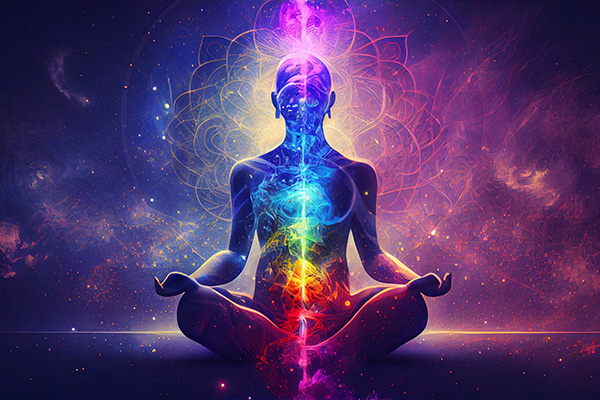Delving into the Enigmas, Insights, and Wonders of Meteorites
 Meteorites have captured my interest as one of the intriguing enigmas of the cosmos. Their ability to withstand a fiery plunge through Earth’s atmosphere in such a breathtaking manner has intrigued me for years, along with their remarkable origins.
Meteorites have captured my interest as one of the intriguing enigmas of the cosmos. Their ability to withstand a fiery plunge through Earth’s atmosphere in such a breathtaking manner has intrigued me for years, along with their remarkable origins.
Recently, I obtained a tiny piece of meteorite from Campo del Cielo, a famous celestial fragment unearthed by Spanish explorers in Argentina in 1576. It now enhances my altar with its cosmic energy, adding vibrancy to my home and igniting intriguing discussions!
Their origins are quite varied. Some hail from asteroids or comets, while others are derived from planetary entities.
What I find particularly enthralling about these “messengers from the cosmos” is that they provide more than just scientific knowledge regarding the formation of our solar system.
Even more fascinating is the spiritual and esoteric significance they’ve carried throughout human history. Across eras and traditions, they remain venerated as influential partners in spirituality and metaphysics.
Numerous lithotherapy enthusiasts believe meteorites are divine gifts, serving as reminders of our everlasting bond with the cosmos. They symbolize spiritual awakening, transformation, and divine insight.
Ancient civilizations harnessed them for meditation and healing, to forge connections with higher realms, and to incite personal development. Being literally “otherworldly,” meteorites provide us with a cosmic lens through which to contemplate our position within the vast scheme of existence.
I’m a shooting star. In those frightening moments, during those hesitant steps, I suddenly shine brilliantly. I perceive myself ~ C. JoyBell C.
Myths, Prophets & Cosmic Folklore
Since ancient epochs, humans have gazed skyward in amazement and awe, interpreting the sudden flash of a fireball or the enigmatic descent of a meteorite as more than mere natural occurrences. These were regarded as divine signals, messages from the cosmos. They were perceived as reminders that something significantly grander is in motion above and around our mortal human experience.
INDIGENOUS TRADITIONS
Within Indigenous cultures, these stones were frequently honored as celestial gifts. The Hopewell people of North America interred meteorite fragments with their deceased, believing they assisted in guiding and safeguarding souls on their passage to the afterlife.
In Maori beliefs of New Zealand, meteors are considered either as ancestral spirits or celestial entities sent to deliver warnings or blessings. In Aboriginal Australian traditions, meteors and comets are integral to creation myths and sacred law, charged with significant spiritual meaning and ancestral memory.
NOSTRADAMUS
Nostradamus, the well-known seer from the 16th century, also engaged with this celestial dialect. His writings include phrases like “fire do I see that from the sky shall fall” and “a blazing meteor will fall into the ocean,” often interpreted as direct references to meteoric phenomena. Given his reliance on astrology, scrying, and channeling, it’s no surprise many believe he foresaw not only terrestrial occurrences but cosmic events as well. His visions may have been initiated by the energetic resonance of heavenly bodies, much like those we observe today.
Nostradamus’ predictions continue to evoke fascination. Some claim he forecasted a massive asteroid, termed the “Harbinger of Fate,” either colliding with Earth or drawing alarmingly close this year. While no asteroid impact is anticipated for 2025, astronomers have verified that multiple near-Earth objects, including 2025 PM2, 2025 OJ1, and 2025 OL1, will pass near our planet this year. These close encounters pose no imminent threat, but they serve as stark reminders of our planet’s relentless interplay with the cosmos.
RELIGIOUS TEACHINGS
The concept of “fire raining from the heavens” exists not only in folklore and prophecy but is also deeply rooted in religious doctrine. In the Bible, for instance, the term “fire and brimstone” represents divine judgment, cleansing, or heaven’s wrath. These fiery elements are depicted as descending from above during pivotal moments, such as the destruction of Sodom and Gomorrah, providing not only punishment but transformation.
Some scholars now theorize that a significant celestial occurrence that led to the conversion of Paul the Apostle, described in the Bible as a “blinding light, thunderous sound, and forceful impact,” may have originated from an exploding meteor. If true, this natural cosmic event not only altered one individual’s life but may have influenced the trajectory of Christianity itself, exemplifying how humanity has consistently interpreted celestial enigmas as divine communications.
While often framed within a perspective of warning and chastisement, many mystical interpretations view this imagery as a metaphor for inner alchemy: the incineration of what no longer serves, the dissolution of illusion, and the revelation of deeper truths. Viewed in this manner, the fiery descent from above, whether meteorite, comet, or divine flame of the holy spirit, can be perceived as a spiritual cleansing, an invitation to awaken and realign with a higher calling.
ANCIENT CIVILIZATIONS
Such narratives are not exclusive to Nostradamus. Across various cultures, meteorites and comets have long been celebrated as sacrosanct. The ancient Greeks believed that stones from the heavens indicated the location of the Oracle at Delphi, one of history’s most esteemed spiritual centers. In medieval Europe, when a significant meteorite descended near Ensisheim, it was viewed as an omen of divine intervention and its arrival was regarded with reverence and ceremony.
These historical accounts remind us that we are not detached from the stars but are part of a much grander cosmic narrative. When we engage with meteorites today, whether in meditation, manifestation, or dreamwork, we join a lineage of stargazers, sages, and seekers who perceived these stones not merely as physical artifacts but as living messengers from the universe.
FALLING STAR WISHES
Among the most cherished components of celestial folklore is the custom of “wishing upon a falling star.” Across cultures and through ages, the simple act of witnessing a meteor race across the night sky and silently making a wish remains a moment of genuine magic for countless individuals around the globe.
This belief has deep, ancient roots. In numerous early traditions, falling stars were thought to be souls descending from the heavens or divine sparks crossing the threshold between realms. Some cultures viewed them as brief portals in the sky through which prayers and intentions could more easily flow into the spiritual domain.
The transient nature of a meteor’s brilliance highlights the magic of perfect timing, a reminder that occasionally a single inspired moment can trigger change. Even today, making a wish on a falling star remains an instinctive ritual: part folklore, part tradition, and part whispered hope sent into the universe.
The great star will burn for seven days. The cloud will make two suns appear ~ Nostradamus
Recent Meteorite Activity Around The World
Essentially, meteorites act as potent cosmic reflections, mirroring the vastness of our internal and external journeys. In recent months, the universe has provided us with additional occurrences to reflect upon. Several recent celestial events encourage us to view meteorites not just as cosmic debris but as spiritual envoys.
In June 2025, a striking incident in McDonough, Georgia garnered worldwide interest. A dazzling midday fireball erupted over the southeastern United States, with a fragment crashing through the roof of a local residence. Remarkably, the meteorite, traced back to a 470-million-year-old asteroid, caused no damage. For spiritual practitioners, such an extraordinary visitation signifies awakening and sudden insight; a direct communication from the cosmos to remain observant.
On the other side of the globe in Australia, researchers have pinpointed an impact zone between Ballarat and Bendigo in Victoria, a promising locale where a new meteorite may soon be excavated. Meanwhile, over Perth, a stunning fireball blazed through the sky on August 6th, captivating the local populace and inciting awe. Such fireballs, in metaphysical context, signify divine enlightenment, cosmic downloads, and the dissolution of old energies.
In another part of Western Australia, fragments of a meteorite estimated to be 4.5 billion years old were recovered from Lake Hope’s salt flats, just in time before seasonal rains threatened to conceal them indefinitely. These ancient stones possess profound spiritual potential: keys to ancestral memory, healing, and grounding.
In a remarkable act of earthly respect, a 54-pound Martian meteorite fetched an astonishing $5.3 million at auction. It represents not only a scientific treasure but a powerful symbolic reminder of our longing to engage with the sacred and the numinous. Yet, it is important to recognize that the sale of this rare meteorite sourced from Niger has triggered outrage and reignited discussions about the ethical extraction and ownership of cosmic relics, with critics maintaining that such stones belong to their cultural heritage and country of origin. For spiritual practitioners, this serves as a call to ensure that the work with meteorites is accompanied by reverence for their source and mindful acquisition.
New ideas come into this world somewhat like falling meteors, with a flash and an explosion ~ Henry David Thoreau
Mystical Meaning & Symbolism
The concept of meteorites being honored as symbols from the divine or as powerful carriers of cosmic energy is not merely a remnant of history. Today, contemporary mystics, energy practitioners, and the spiritually curious are rediscovering their metaphysical significance, not only as celestial artifacts but as dynamic instruments for healing, manifestation, and energetic alignment. Integrating meteorite energy into your spiritual routine adds a unique facet that bridges the ancient with the cosmic.
Meteorites and fireballs are believed to carry solar energy or yang prana, invigorating the third eye and crown chakras. By enhancing inner perception, psychic attunement, and emotional awareness, they assist in anchoring us into our higher calling.
Meteor showers, such as the ongoing Perseids, are regarded as spiritual doorways. They emerge at moments when divine communication is particularly potent. Tied to the myth of Zeus and Danaë, this shower signifies divine inspiration, sacred union, and the unlocking of hidden creativity.
Fireballs, especially when witnessed with intent, can represent spiritual purification, the incineration of the old, and the sudden emergence of truth or transformation. Dreams involving meteors or celestial fragments often indicate significant energetic transitions, messages from the spirit, or release from outdated patterns.
I would rather be a superb meteor, every atom of me in magnificent glow, than a sleepy and permanent planet ~ Jack London
Harnessing Meteorite Magic In Your Spiritual Practice
Whether utilized in ritual, meditation, energy work, or conscious creation, meteorites invite us to connect with something substantially larger than ourselves, the vast wisdom of the universe, crystallized in extraterrestrial matter.
Engaging with meteorite energy deepens your bond with the mysteries of existence while fostering grounding, clarity, and transformation in your everyday life. For those sensitive to the subtle energies of the Earth and sky, meteorites present a powerful and enriching addition to any metaphysical or conscious living practice.
The following are some inspired methods to incorporate meteorites into your spiritual practice and lifestyle. Each method is grounded in the understanding that these stones are more than just ancient remnants; they are alive with divine wisdom.
MEDITATION
Meditating with a meteorite can provide profound grounding and enlightenment. Before you begin, cleanse the stone to remove any lingering energy—this can be as simple as burying it in the earth overnight, then placing it in sunlight for a few hours to recharge.
Seek a tranquil space. Take a few deep, purifying breaths and set your intention. Perhaps you aim to access cosmic wisdom or manifest abundance in your life. Hold the meteorite in both hands, or position it on a chakra that requires activation. For instance:
✵ To obtain healing from the cosmos, place it on your crown chakra.
✵ To activate psychic abilities, gently rest it on your third eye.
✵ To invite love and connection, position it on your heart chakra.
✵ To enhance your self-confidence, place it on your solar plexus.
✵ To ground your energy, set it behind you at the base of your spine.
Reiterate your intention aloud if possible.
What kind of energy are you perceiving from the meteorite? What is it communicating to you? Take your time. Allow the energy to steer the experience. Remain fully present. Even if you don’t receive a message right away, trust that clarity will arise, either during meditation or later in your daily interactions.
Note: You don’t necessarily need to meditate to benefit from these placements. Simply wearing or resting with a meteorite on your chakra points can be advantageous, but meditative practices, prayer, or chanting can amplify the effects.
ASTRAL TRAVEL
Wanna take a trip around the sun, or venture to a more ethereal space? If you’re delving into the astral realm, grounding is crucial. Hold your meteorite or lay it on a comfortable spot on your body. Visualize it as your celestial ally through time and space, supporting your journey whether it’s for healing, insight, or divine connection.
Afterward, journal your experiences. Writing helps to assimilate the lessons and revisit the wisdom acquired.
Once you’ve finalized your spiritual practice, spend time reflecting. Listen attentively to your body. Stay grounded by holding your meteorite. Drink water to help reanchor yourself in the physical realm and maintain hydration.
DREAMWORK
Meteorite can also serve as a powerful ally in dreamwork, assisting in unlocking subconscious insights and cosmic revelations while you slumber. By placing a meteorite close to your bed, beneath your pillow, or on your nightstand, you can encourage vivid dreams, cosmic downloads, astral experiences, and access to elevated states of consciousness.
Prior to sleeping, set a definitive intention to receive guidance, healing, or connection from the cosmos. Keep a dream journal close at hand to capture any impressions upon awakening, regardless of how symbolic or fragmented they may seem. Over time, recurring patterns and insights may emerge, unveiling the deeper wisdom these celestial stones can illuminate during your most receptive states.
MANIFESTATION
Meteorite can enhance manifestation work by infusing cosmic energy into the physical reality. Its celestial origins make it a formidable ally for aligning your intentions with universal wisdom and divine timing. Given that these stones embody both transformation and grounding energies, they facilitate focused, aligned, and supported manifestations through higher frequencies.
To utilize meteorite in manifestation, start by clearly articulating your desire, whether regarding abundance, purpose, healing, or personal growth. Hold the stone during your intention-setting ritual, or display it on your altar amidst symbols representing your desires. Visualize your goal while feeling it already realized, allowing the meteorite to act as a conduit between thought and reality.
CHARMS & TALISMANS
Adorning yourself with meteorite jewelry allows you to carry its energy with you throughout the day. It can offer protection from negativity and maintain your spiritual attunement. For example, Gibeon meteorite, rich in iron, is reputed for its potent energy and can be particularly effective at dispelling unwelcome vibrations when worn.
HOME PLACEMENT
When displayed within the home, meteorites transcend mere decorative objects—they become spiritual companions. They can cleanse negative energy, foster harmony, and serve as visual reminders of your connection to the cosmos. Meteorites can assist in balancing emotions, enhancing inner strength, and providing the courage to confront life’s challenges.
Whatever you choose to believe, dear reader, regarding meteorites is certainly unique to you. Yet, for many, they represent much more than mere conversation starters. They are sacred gifts from the cosmos.
It’s well recorded that extraterrestrial impacts have helped to shape the evolution of life on this planet ~ Bill Cooke
Ethical Considerations For Meteorite Work
As enchanting and captivating as meteorites are, they are also natural objects with tangible origins, histories, and implications. Before integrating them into your spiritual routine, it’s crucial to approach them with the necessary awareness and respect, not only for their cosmic origins but also considering the context of their discovery and utilization.
When selecting a meteorite for personal use, ensure it is ethically sourced. This entails purchasing from reputable vendors who can clearly confirm the origin of the stone and its lawful collection. Certain meteorites may originate from protected areas or hold significant scientific value, hence obtaining or purchasing them without appropriate permissions can harm both the environment and ongoing scientific exploration.
Furthermore, it’s vital to acknowledge cultural and spiritual relevance. Specific meteorites may be sacred to Indigenous groups and regarded as spiritual ancestors or divine messages. Using such stones without adequate understanding or consent may unintentionally disrespect vibrant traditions. In cases of uncertainty, opt for stones that are culturally neutral or were provided through respectful, transparent channels.
Caring for your meteorite represents another form of reverence. Handle with care, store it mindfully, and regard it as more than just an item; treat it as a cherished guest from the cosmos! Natural oils from your hands can deteriorate a specimen over time, especially rare or delicate types. Whenever feasible, use gloves when handling your meteorite, store it in foil or protective wrap as needed, and keep it with desiccants to preserve its condition.
Ultimately, the approach we take in acquiring, handling, and honoring these cosmic fragments should embody the same spiritual principles we aspire to uphold: awareness, integrity, gratitude, respect, and reverence. When approached in this manner, working with meteorites evolves into more than just a metaphysical activity. It transforms into a sacred gesture of cosmic stewardship.
|
Lucinda is a highly trained Intuitive and Empath, residing in a lovely village in North Yorkshire, England. She possesses the exceptional ability to comprehend a client’s personal struggles and has faced many challenges herself, making her stronger in the process! It is both her vocation and her joy to assist those in need. Whenever she requires support, her Guides are always present to aid her growth and provide clear insights for her clients. Predictions have always been a dependable tool for her to accurately anticipate events; however, Lucinda also utilizes her expertise in Dream Interpretation, Numerology, Angel Cards, the Law of Attraction, and Life Coaching to deliver thorough solutions to any issue. As a member of AMORC and Beyond Freedom Evolution, she offers inspiration, education, and personal support for spiritual growth. If you seek answers or wish to manifest your desires, you can find Lucinda at PsychicAccess.com. |
Meteorites are captivating entities that have enthralled both scientists and the general public for centuries. These cosmic rocks have journeyed vast distances through space before landing on Earth, bringing with them insightful information about the genesis of our solar system and the universe at large.
One of the most compelling aspects of meteorites is their enigmatic origins. These rocks are fragments of asteroids, comets, or other celestial bodies that have impacted Earth. Some meteorites originate from the asteroid belt between Mars and Jupiter, while others are remnants of comets that have approached our planet. Scientifically studying these rocks grants valuable insights into the formation and progression of our solar system.
In addition to their scientific relevance, meteorites also possess cultural and spiritual significance for many individuals. Historically, meteorites have been honored as sacred artifacts believed to harbor magical abilities. In various cultures, meteorites are perceived as offerings from deities or harbingers of good fortune. The renowned Kaaba in Mecca, for example, is said to contain a meteorite that is respected by Muslims as a holy relic.
Meteorites convey messages from the past, providing hints about the conditions present in the early solar system. By analyzing the chemical composition and structure of meteorites, scientists can glean information about the events that shaped our planet and the other celestial bodies within our solar system. Some meteorites include amino acids, the essential components of life, suggesting the tantalizing possibility that these rocks may have influenced the emergence of life on Earth.
Recent advancements in technology have enabled scientists to examine meteorites with unprecedented detail. High-resolution imaging techniques, such as electron microscopy and X-ray diffraction, have unveiled the intricate structures and mineral compositions within these rocks. Isotope analysis has illuminated the age and origins of meteorites, enriching our understanding of the history of our solar system.
As our knowledge of meteorites expands, so too does our appreciation for these mysterious objects. Whether regarded as scientific specimens, cultural treasures, or mystical talismans, meteorites occupy a unique place in the hearts and minds of people globally. By delving into the enigmas, messages, and magic associated with meteorites, we can enhance our comprehension of the universe and our role within it. Continue reading










